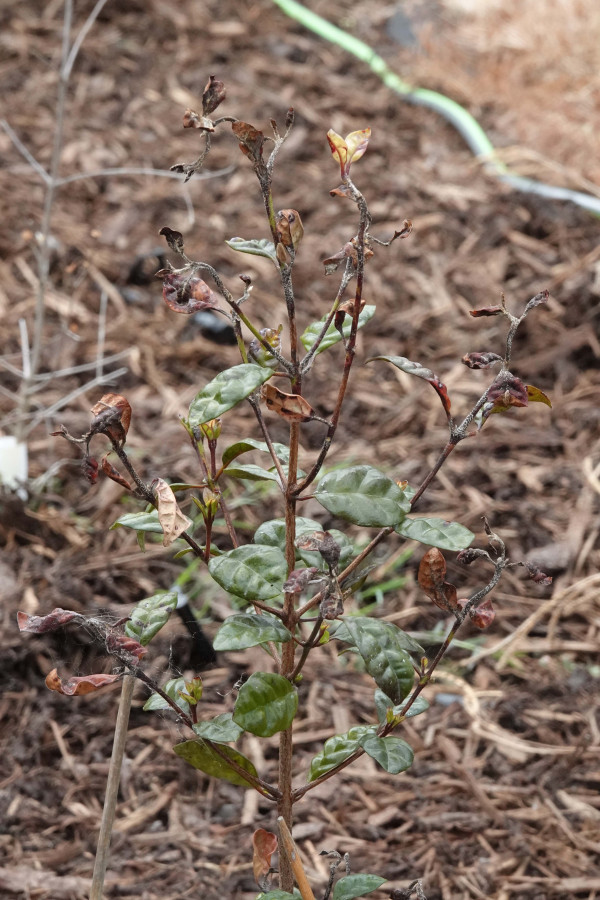What is myrtle rust?
Myrtle rust is a particularly damaging and invasive form of rust because it can infect the entire myrtle family, and there are hundreds of known susceptible hosts.
There are many non-native myrtle species in New Zealand, including eucalypts, feijoa, bottlebrushes, lillypilly, and monkey apple. You can use the Myrtle Rust ID Guide or check out the Identify myrtle rust page on this site to help identify myrtles and myrtle rust.
Download Myrtle Rust ID Guide - Biosecurity New Zealand [PDF, 829KB]
Additionally, Manaaki Whenua – Landcare Research and Biosecurity New Zealand have partnered in the development of the NZ Myrtaceae Key – a free app that makes it easy for citizen biosecurity volunteers to identify susceptible plants and keep an eye out for the fungal disease myrtle rust.
Download App - Key to the Myrtaceae of New Zealand
Symptoms of myrtle rust
The first visible symptoms are powdery, bright yellow or orange-yellow pustules that develop on leaves, tips and stems. The pustules can progress into wounds on the plant and may cause leaves and shoots to become misshapen or disfigured and die off. The disease can cause deformed leaves, heavy leaf loss from branches, damaged fruits, canopy dieback, stunted plant growth, and eventually may lead to plant death.
Myrtle rust symptoms on plants can look like:
- bright yellow powdery eruptions appearing on the underside of the leaf (young infection)
- bright yellow powdery eruptions on both sides of the leaf (mature infection)
- brown/grey rust pustules (older spores) on older lesions
- grey, 'fuzzy' spore growth on undersides of leaves
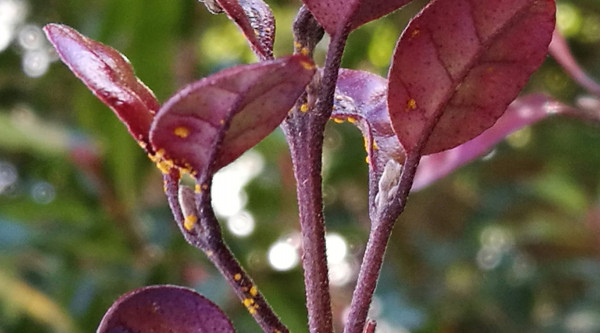
Myrtle rust on a Ramarama (Lopomyrtus) plant
What are rusts?
Rusts are a kind of fungal disease that affect plants. They get the name rust because they produce large numbers of tiny rust-coloured spores. Myrtle rust is a fungal disease caused by the fungus Austropuccinia psidii that only affects plants in the myrtle family.
New Zealand has a variety of native plants that belong to this family including pōhutukawa, mānuka, kānuka, rātā, swamp maire and ramarama. Other plants in the Myrtaceae family include the introduced fruit species feijoa and guava and commercially grown species such as eucalyptus.
When a plant becomes infected with myrtle rust, the disease affects the young, soft, actively growing leaves, shoot tips and young stems. At the very early stages symptoms are invisible to the naked eye. Even in the later stages of infection myrtle rust can be very difficult to detect, as some symptoms can look similar to insect or other types of damage.
What plants are most at risk?
In New Zealand our understanding around susceptibility continues to increase. Some examples where risk is high include:
- Lophomyrtus bullata, Ramarama - this is a highly susceptible native myrtle species, also known as bubble leaf (Lophomyrtus bullata and its hybrids). This attractive native species is used widely in large-scale plantings as well as in residential and commercial hedging, where the dense young growth that results from repeated pruning may help to create an ideal environment for the fungus to rapidly grow and spread.
- Syzygium maire, Maire tawake is severely susceptible and experiences infection on leaves, stem and flower structures. It is facing functional extinction in some areas where trees are unable to produce viable seeds.
- Lophomyrtus obcordata, Rōhutu are severely susceptible.
- Metrosideros excelsa, Pōhutukawa are highly susceptible, with infection on leaves, stem, flowers, seed capsules, seedlings and epicormic shoots. Substantial increase in infection was noted in summer 2022–23.
An extensive list of susceptibility is available Download Myrtle Rust Susceptible Host Species [PDF, 477KB]
Myrtle rust and affected plants at different stages of the disease
The photos below show how myrtle rust can affect plants over time. Photo credit: BioHeritage National Science Challenge.
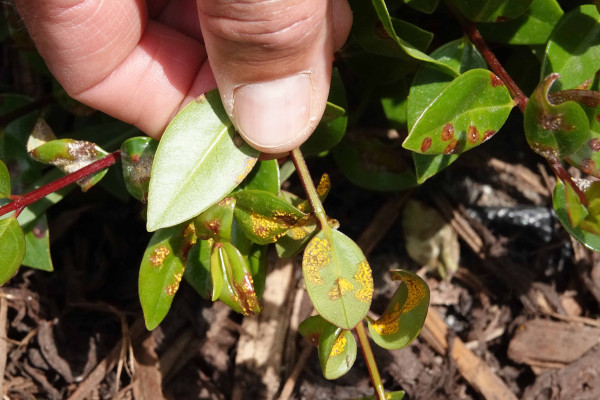
Bright yellow powdery eruptions appear on the underside of the young leaf
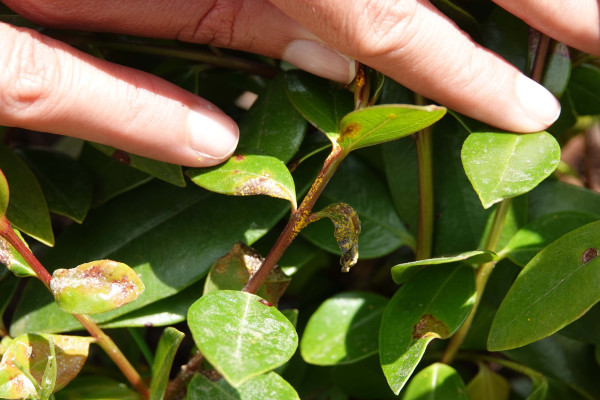
As the infection progresses bright yellow powdery eruptions of spores appear on both sides of the leaf
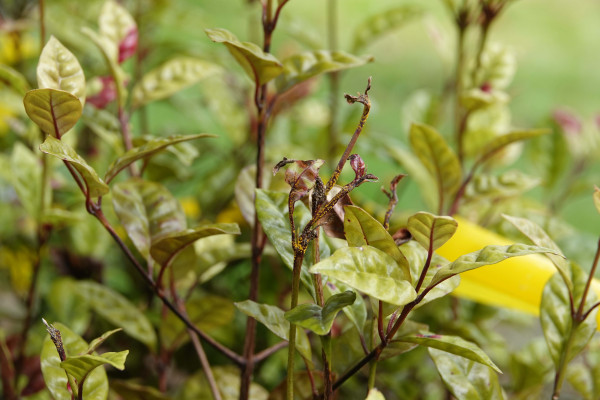
Overtime the pustules can darken and become brown-grey
